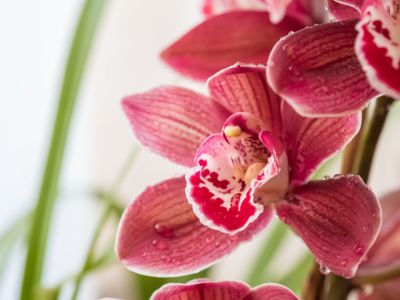The average home interior is perfect for growing Cattleya orchids. There are just a few details to learn regarding how to grow Cattleya orchids; but once you master those, you will have a lovely and long-term addition to your home.
Information About Cattleya
Orchids are the largest group of flowering plants. Their presence is in most areas of the world, and they are highly adaptive as a species. Cattleyas are named for William Cattley, an English horticulturist from the 19th century. Cattleyas are the focus of collectors and breeders and new hybrids come out nearly every year amid fanfare and excitement in the growing community. Some interesting information about Cattleya is their native habit as epiphytes, or tree growing plants. They can cling to a tree crotch or rocky crevasse and need little soil. The plants are long lived perennials and some professional collectors have plants half a century old. Cattleya orchid plants grow well in soilless media, such as bark and rocks or perlite, which mimics this natural growth habit.
How to Grow Cattleya Orchids
Growing Cattleya orchids requires some patience, but the lovely blooms are worth the effort. In addition to proper growing media, they require well-draining containers, medium to high humidity, temperatures of at least 65 degrees F. (18 C.) during the day, and bright high light. Repot the plants every two to three years, although they do enjoy being pot bound. Don’t worry if you see the roots wrapping around the base of the plant. This is normal and in their native setting those roots would be holding the plant in place high above the forest canopy or rocky cliff.
Caring for Cattleya Orchid Plants
Once you choose a good location and get the site conditions just right, caring for Cattleya orchids is easy. The lighting should be bright but indirect. Warmer temperatures are best from 70 to 85 degrees F. (24-30 C.). Humidity is often the hardest part to control in the home interior. Use a humidifier in the orchid room or place the plant on a saucer filled with pebbles and water. The evaporation will add moisture to the air. Allow the potting medium to dry out between watering. Then water deeply until excess moisture runs out of the drainage holes. Use a high nitrogen fertilizer every two weeks during the growing season. A formula of 30-10-10 is suitable. Watch for mealybugs and scale and don’t overwater or the plant will experience root rot.
